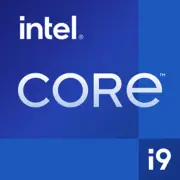Intel Core i9-9920X X-series

Intel Core i9-9920X X-Serie: Umfassender Überblick über den Prozessor von 2025
Aktuell im April 2025
1. Hauptmerkmale: Architektur, Fertigungstechnologie und Schlüsselmerkmale
Der Intel Core i9-9920X, der Ende 2018 auf den Markt kam, bleibt im Jahr 2025 aufgrund seiner Multithreading-Leistung gefragt. Trotz seines Alters hält er sich in der Nische der Arbeitsstationen.
Architektur und Fertigungstechnologie
- Codename: SkyLake-X (Modifikation der SkyLake-Architektur für HEDT-Plattformen).
- Fertigungstechnologie: 14 nm (im Jahr 2025 veraltet, aber für hohe Lasten optimiert).
- Kerne/Threads: 12 Kerne, 24 Threads.
- Basis-/Maximaltaktfrequenz: 3,5 GHz / 4,5 GHz (Turbo Boost Max 3.0).
- TDP: 165 W – hoher Energieverbrauch, der effiziente Kühlung erfordert.
Schlüsselmerkmale
- Unterstützung von Intel Hyper-Threading und AVX-512 für professionelle Anwendungen.
- 16 PCIe 3.0-Lanes (erweiterbar auf 44 über den X299-Chipsatz).
- L3-Cache: 19,25 MB.
Leistung
- Geekbench 6: Single-Core – 1368, Multi-Core – 9627.
- Zum Vergleich: Ryzen 9 5900X (12 Kerne) erreicht ~1500/10500, ist jedoch im Jahr 2025 teurer.
2. Kompatible Motherboards: Sockel und Chipsätze
Der Prozessor verwendet den Sockel LGA 2066, was die Auswahl an Motherboards auf veraltete, aber verfügbare Modelle beschränkt.
Empfohlene Chipsätze:
- Intel X299: Die einzige Option für SkyLake-X.
- Beispiele für Boards: ASUS ROG Rampage VI Extreme, Gigabyte X299 AORUS Gaming 9.
- Merkmale: Unterstützung von Quad-Channel-Speicher, Übertaktung, zahlreiche PCIe-Steckplätze.
Worauf achten:
- VRM-Modul: Aufgrund eines TDP von 165 W ist ein Motherboard mit einer starken Stromphase erforderlich (mindestens 8+ Phasen).
- Kühlung für VRM: Motherboards mit Kühlkörpern auf MOSFETs – zum Beispiel MSI X299 PRO.
- Preise: Neue X299-Boards sind im Jahr 2025 selten, aber Restbestände werden für $250–400 verkauft.
3. Unterstützter Speicher
- Typ: DDR4 (DDR5 wird nicht unterstützt).
- Modi: Quad-Channel (optimale Konfiguration zur Maximierung der Bandbreite).
- Frequenzen: Bis zu 2666 MHz (offiziell), aber Übertaktung auf 3200–3600 MHz ist auf kompatiblen Boards möglich.
- Maximale Kapazität: Abhängig vom Board – normalerweise bis zu 256 GB (8 Slots × 32 GB).
Tipp: Verwenden Sie Sets von DDR4-3200 CL16 (z. B. Corsair Vengeance LPX) für ein gutes Preis-Leistungs-Verhältnis.
4. Empfehlungen für Netzteile
Angesichts des TDP von 165 W und der Anforderungen an das System:
- Mindestleistung des Netzteils: 750 W (für PCs mit Grafikkarten der Klasse RTX 4070 Ti).
- Empfohlen: 850 W mit 80+ Gold-Zertifizierung oder höher (Corsair RM850x, Seasonic PRIME GX-850).
- Besonderheiten:
- Hochwertige Kabel und Spannungstabilität sind entscheidend für das Übertakten.
- Vermeiden Sie günstige Netzteile – Spannungsschwankungen können die CPU beschädigen.
5. Vor- und Nachteile des Intel Core i9-9920X
Vorteile:
- Hohe Multithread-Leistung für Rendering und Kodierung.
- Erschwinglicher Preis im Jahr 2025: $400–500 (neu, Restbestände).
- Unterstützung von Quad-Channel-Speicher und vielen PCIe-Geräten.
Nachteile:
- Veraltete 14 nm Fertigungstechnologie: hohe Wärmeentwicklung und Energieverbrauch.
- Keine Unterstützung für PCIe 4.0/5.0 und DDR5.
- Geringere Leistung als Ryzen 9 7900X in Single-Core-Anwendungen (~15–20%).
6. Nutzungsszenarien
Arbeitsaufgaben:
- 3D-Rendering (Blender, V-Ray): 12 Kerne arbeiten schneller als 8-kernige CPUs.
- Videobearbeitung (Premiere Pro): Beschleunigung des Renderings mit 4K/8K.
- Simulationen (ANSYS): AVX-512 verbessert die Leistung bei wissenschaftlichen Berechnungen.
Spiele:
- Streaming (OBS + Spiel): 24 Threads ermöglichen das Kodieren von Video ohne Verzögerungen.
- 4K-Gaming: Der Prozessor wird kein Engpass mit einer Grafikkarte der Klasse RTX 4080 sein.
- Nachteil: In älteren Spielen (z. B. CS2) zeigt Ryzen 5 7600X höhere FPS.
Multimedia:
- Fotobearbeitung in Lightroom + paralleles Arbeiten mit Browser und Hintergrund – ideal.
7. Vergleich mit Wettbewerbern
- AMD Ryzen 9 5900X (12 Kerne):
- Vorteile: 7 nm, PCIe 4.0, geringeres TDP (105 W).
- Nachteile: Teurer ($550 im Jahr 2025), schwächer bei AVX-Lasten.
- Intel Core i7-14700K (20 Kerne):
- Vorteile: Neuer 10 nm Fertigungsprozess, DDR5.
- Nachteile: Höherer Preis ($600), begrenzter PCIe-Controller.
- Fazit: Der i9-9920X ist attraktiv als budgetfreundliche Arbeitsstation, jedoch nicht für ein zukunftssicheres Upgrade.
8. Tipps zum Zusammenbauen
1. Kühlung:
- Minimal: Noctua NH-D15 ($90).
- Optimal: AIO-Wasserkühlung Arctic Liquid Freezer II 360 ($120).
2. Gehäuse: Wählen Sie Modelle mit guter Belüftung (Lian Li Lancool III, be quiet! Silent Base 802).
3. Übertaktung: VCore-Spannung nicht über 1,35 V – andernfalls ist ein Überhitzen unvermeidlich.
4. BIOS: Aktualisieren Sie auf die neueste Version zur Verbesserung der Stabilität.
9. Fazit: Für wen eignet sich der i9-9920X im Jahr 2025?
Dieser Prozessor ist relevant für:
- Budget-Arbeitsstationen: Videobearbeiter, Ingenieure, die viele Kerne für $400 benötigen.
- Upgrade-Enthusiasten: Wenn bereits ein X299-Board und DDR4 vorhanden sind.
- Streamer: Streams + dedizierte Grafikkarte – das ideale Gleichgewicht.
Nicht empfohlen:
- Gamer, die auf maximale FPS aus sind.
- Nutzer, die einen Wechsel zu DDR5 und PCIe 5.0 planen.
Fazit: Der Intel Core i9-9920X ist eine bewährte Wahl für Profis, allerdings nur mit kompatiblen Komponenten. Im Jahr 2025 ist es eine Option für diejenigen, die Wert auf das Preis-Leistungs-Verhältnis und Multithreading-Leistung legen, nicht auf die neuesten Technologien.
Basic
CPU-Spezifikationen
Speicherspezifikationen
Verschiedenes
Benchmarks
Im Vergleich zu anderen CPUs
In sozialen Medien teilen
Oder verlinken Sie uns
<a href="https://cputronic.com/de/cpu/intel-core-i9-9920x-x-series" target="_blank">Intel Core i9-9920X X-series</a>